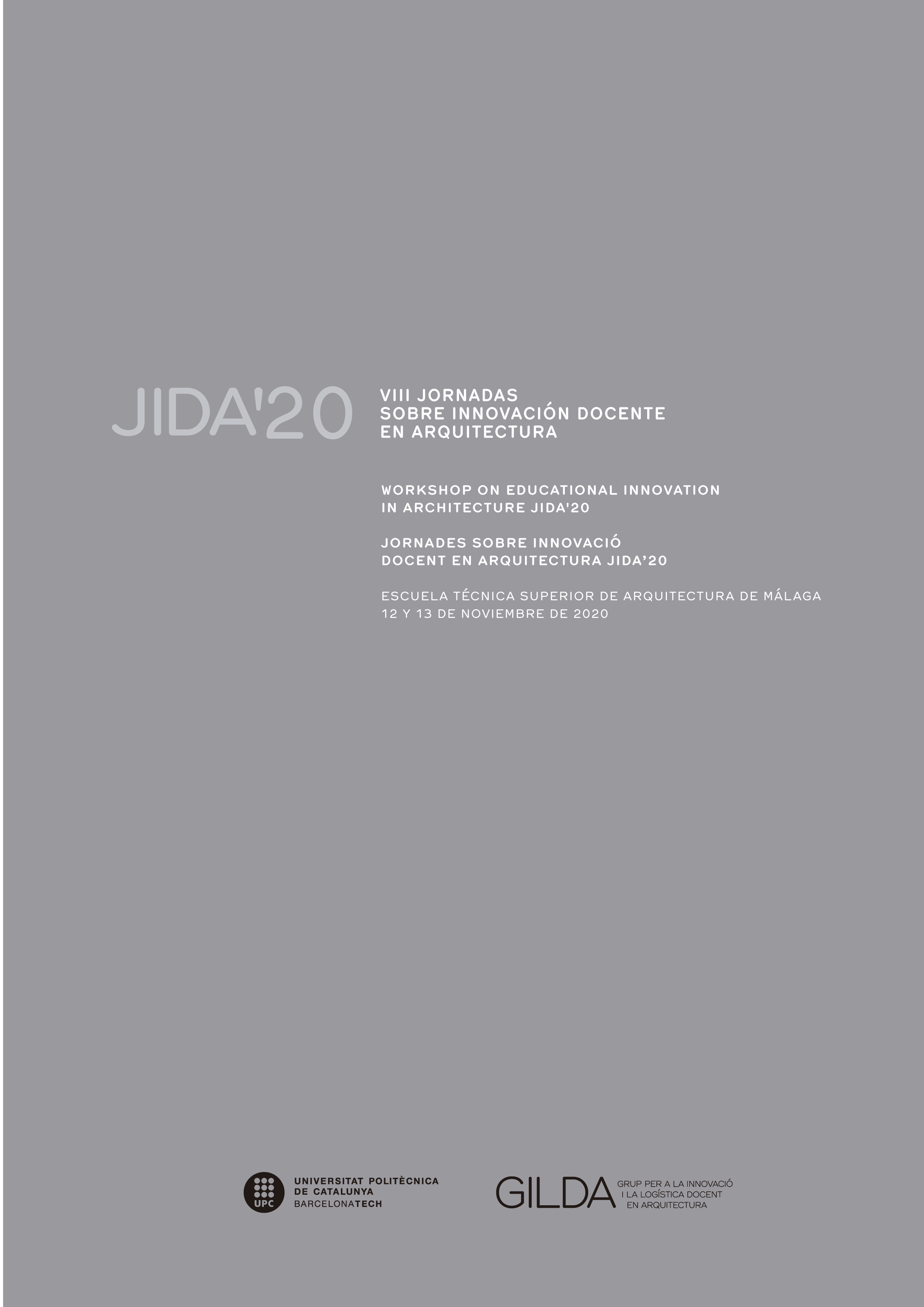Me, you, us and time in the inhabited space
DOI:
https://doi.org/10.5821/jida.2020.9378Abstract
The architectural design course presented here, takes place in the first years of the architectural studies curriculum, and seeks to introduce the student to the inhabited space as a non-quantitative and neutral entity, but as a highly qualified one, full of meaning, experience and emotion. To do this, we start by exploring and becoming conscious of the long experience we all have as inhabitants, by exercising our own way of life from childhood, to observe it in detail, analyse it and put it in crisis, and also into value. This initiatory exercise allows us to build the 'I dwell'. We start from this introspection to be able to build the 'we' and finally link up with 'the commons' through dialogue, conflict and achievement. Different scales of relationships and ways of life that enable us to develop a variation of design skills linked to contemporary life in the existing city and in the city to come.
References
ALONSO, R. y MORALES, E, DE LA FUENTE, J. Y GAVILANES, J. (2014) (Coordinadores). El taller de proyectos ‘Casa más o menos’. La vivienda como proceso. Málaga : Recolectores Urbanos editorial / Escuela de Arquitectura Universidad de Málaga.
BRAND, S. (1994). How buildings learn. What happens after they’re built. New York: Viking (Penguin Books).
FOGUÉ, U. (2020). “La ciudad dentro de casa†en Urbanbat Fest nov 2020. <http://9festival.urbanbat.org/la-ciudad-dentro-de-casa> [Consulta : 18 de septiembre de 2020].
HABRAKEN, J. (1975). Soportes: Una alternativa al alojamiento de masas. Madrid: Alberto Corazón.
HERNANDO, A. (2012). La fantasÃa de la individualidad: sobre la construcción sociohistórica del sujeto moderno. Madrid : Katz Editores.
LEUPEN, B. (2006). Frame and generic space. A study into the changeable dwelling proceeding from the permanent. Rotterdam: 010 Publisher.
MORALES, E. ; ALONSO, R. y Moreno, E. (2012). “La vivienda como proceso. Estrategias de flexibilidad†en HaÌbitat y Sociedad, número 4, pp. 33-54.
MORALES, E., ALONSO, R., CELOBERT, & LÓPEZ, J. M. (2011). Plataforma online de asesoramiento ciudadano sobre la vivienda como proceso. <http://www.masqueunacasa.org> [Consulta : 18 de septiembre de 2020].
MORALES, E., & ALONSO, R. (2010). Casa maÌs o menos: Manual de recomendaciones para una vivienda en proceso. Proyecto de InvestigacioÌn financiado por la ConsejeriÌa de Vivienda y OrdenacioÌn del Territorio de la Junta de AndaluciÌa.
RIBOT, A., BORREGO, I., GARCÃA-GERMÃN, J., GARCÃA-SETIÉN, D. (2017). Open Building 2.0. Re-pensando la Edificación Abierta. Madrid y BerlÃn : CoLab.
TORRES NADAL J.M. (2019) Arquitectura in-dependiente. Universidad de Alicante.



















